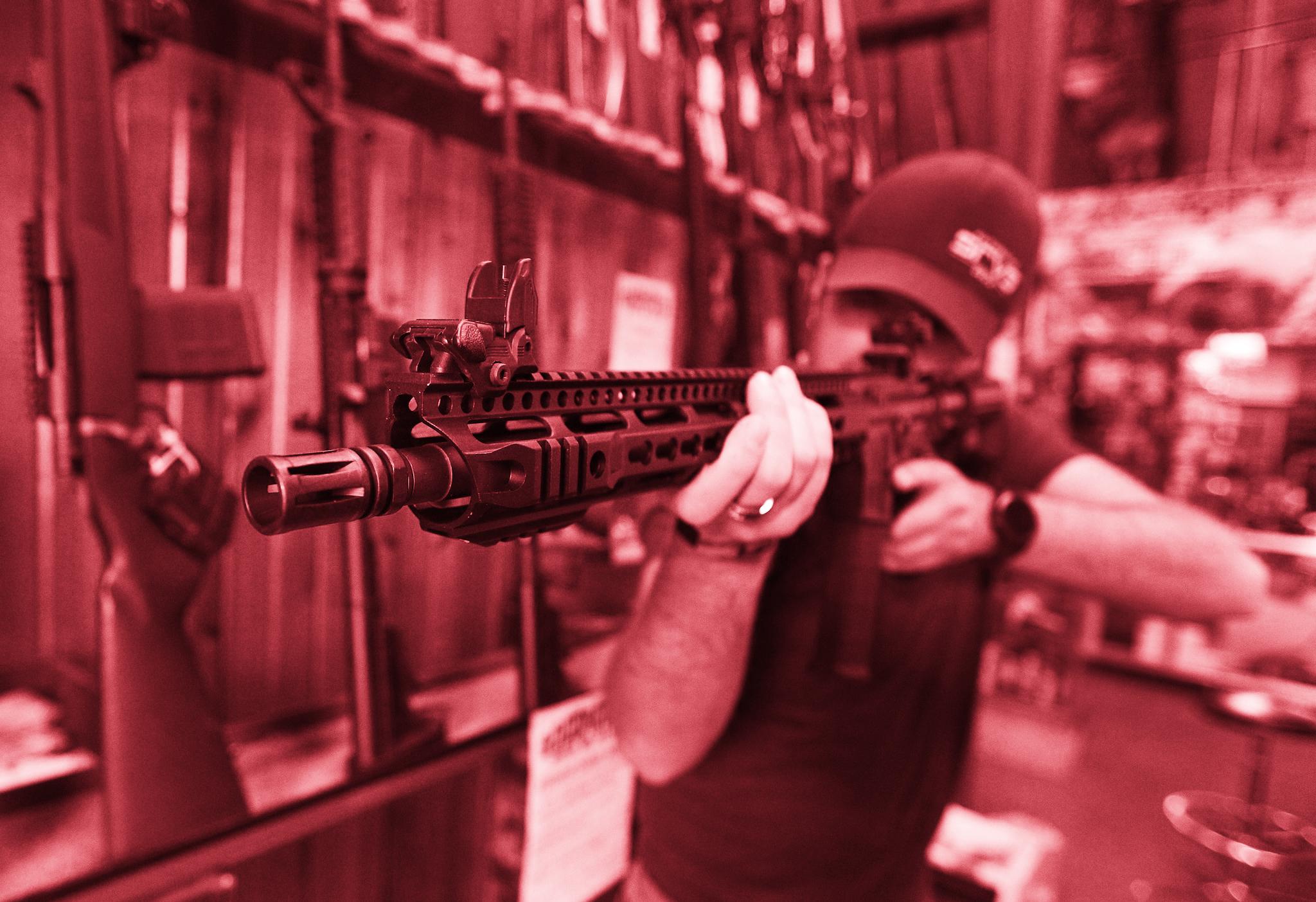Florida school shooting: Why Donald Trump is pushing to ban bump stocks, and why it isn't likely to be enough

Donald Trump has suggested that he could ban bump stocks. It could be just the start of new gun control in the US – though it's more likely that it's the end, finishing far sooner than advocates would like.
The technology, which allows people to fire fast and fatally as if they have a machine gun, is one of the most controversial parts of the gun industry. But it is only one part of a vast array of accessories intended to make killing machines even more deadly.
Despite Mr Trump's new commitment to banning bump stocks, a range of other weapons and kit is available on the market. While the new legislation is likely to be seen as a step forward, here's why it's far from everything that's been asked of the President, in the wake of another deadly shooting.
What are bump stocks?
In the US – despite its reputation – it's intentionally very difficult to buy automatic weapons. It might be the country with the highest rate of gun ownership in the world, but few of them are automatic.
Such weapons have been banned since early in the 20th century, when a series of gangland massacres led Congress to ban machine guns with the National Firearms Act. That's been updated in a range of legislation since, all of which has meant the today only three in every 1,000 gun crimes uses a machine gun.
But the ban hasn't been entirely successful at keeping similar deadly weapons off the streets. Gun owners have come up with new ways of modifying their guns to make them fire more and faster, in a way similar to automatic weapons – many of which are celebrated in the gun community for their invention and danger.
The most famous of those is the bump stock. Its infamy was increased when it became clear it was the reason that allowed Las Vegas gunman Stephen Paddock to shoot so fast for so long.
Its name is a clue to what it does. "Stock" is the chunky bit of the gun that usually sits on a person's shoulder when they fire it, which it replaces; the "bump" is the action that it does, allowing the gun to slide back and forth and bump into the trigger when it comes off the shooter's shoulder.
In essence, it takes the energy that a shooter feels when the gun slams into them as they fire. It sends that back into the trigger – meaning that every shot pulls the trigger, too, allowing the gun to keep firing.
It makes it something like an automatic weapon: every shot brings the next shot. That turns a semi-automatic assault rifle into a machine gun, making it much more deadly.
Why are they being banned?
Opponents of the technology – which now appears to include Donald Trump – argue that there would never be any sensible need to actually use it. For starters, bump stocks make it impossible to fire with any amount of accuracy, making it useless for hunting, self-defence or the other reasons gun-owners argue they need to hold onto their weapons.
The gun wasn't used in the Florida school shooting. But Mr Trump appears to have made the decision to ban them in response to the vast amount of pressure over gun control that has followed it; it is a relatively uncontroversial piece of kit to ban people from buying.
Why isn't that enough?
Despite The President's relenting on this piece of gun control, regulations in the US are still vastly more relaxed than those in other countries. And it's that fact that gun control advocates want to change.
Even if bump stocks are banned, there are still vast amounts of very deadly weapons that are easy to buy in the US. And there are also tools exactly like bump stocks that make it easy to fire fast and fatally, mimicking much of the same features.
It's still easy to buy hellfire triggers and rotating-trigger actuators, for instance, which do much the same thing. Hellfire triggers are a little spring added inside the trigger, which means each push bounces back and fires again; rotating-trigger actuators involve putting a crank on the side of a gun, so that a person can simply turn it and have the trigger pressed repeatedly and quickly.
In addition to those tricks, the weapon that both the Las Vegas shooter and the Florida killer used remains readily available. The AR-15 assault rifle – like a range of other assault weapons – is easy to buy, despite being developed as a military weapon and being specifically calculated to bring the maximum amount of destruction.
Such weapons were once much more tightly regulated, by legislation passed during the Clinton presidency. But those laws have now lapsed, and they're once again easy to acquire – whatever the person buying them wants to use them for.
And there appears – at least recently – to be some focus on relaxing other laws, even as some are getting more strict. Last year, for instance, some lawmakers backed a proposal to make silencers more easy to buy – so that people's hearing didn't get hurt, according to advocates, though the more obvious use for the accessory is that it makes it easier to kill people and harder for authorities to track them down. That change was dropped in the wake of the Las Vegas shooting.
Subscribe to Independent Premium to bookmark this article
Want to bookmark your favourite articles and stories to read or reference later? Start your Independent Premium subscription today.

Join our commenting forum
Join thought-provoking conversations, follow other Independent readers and see their replies